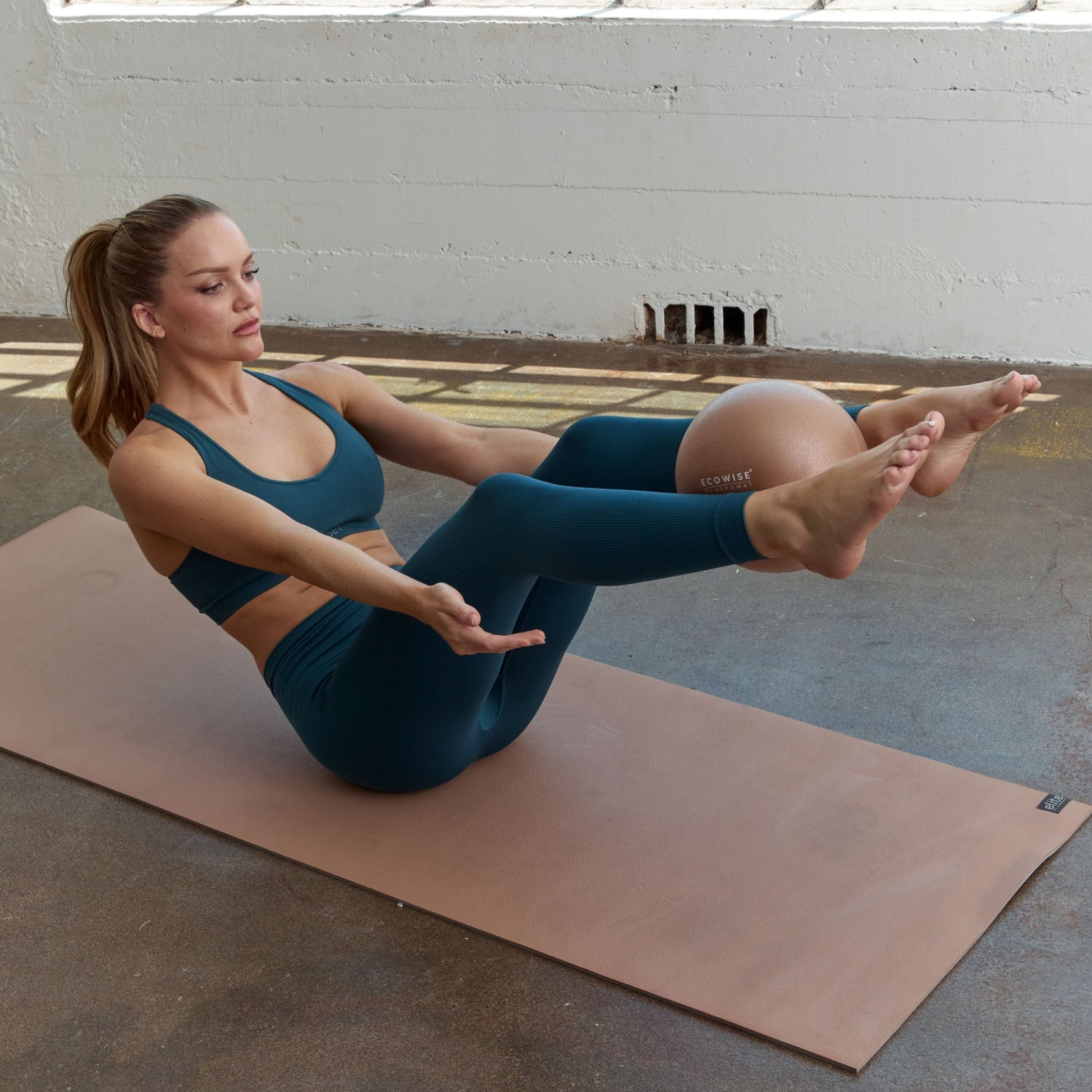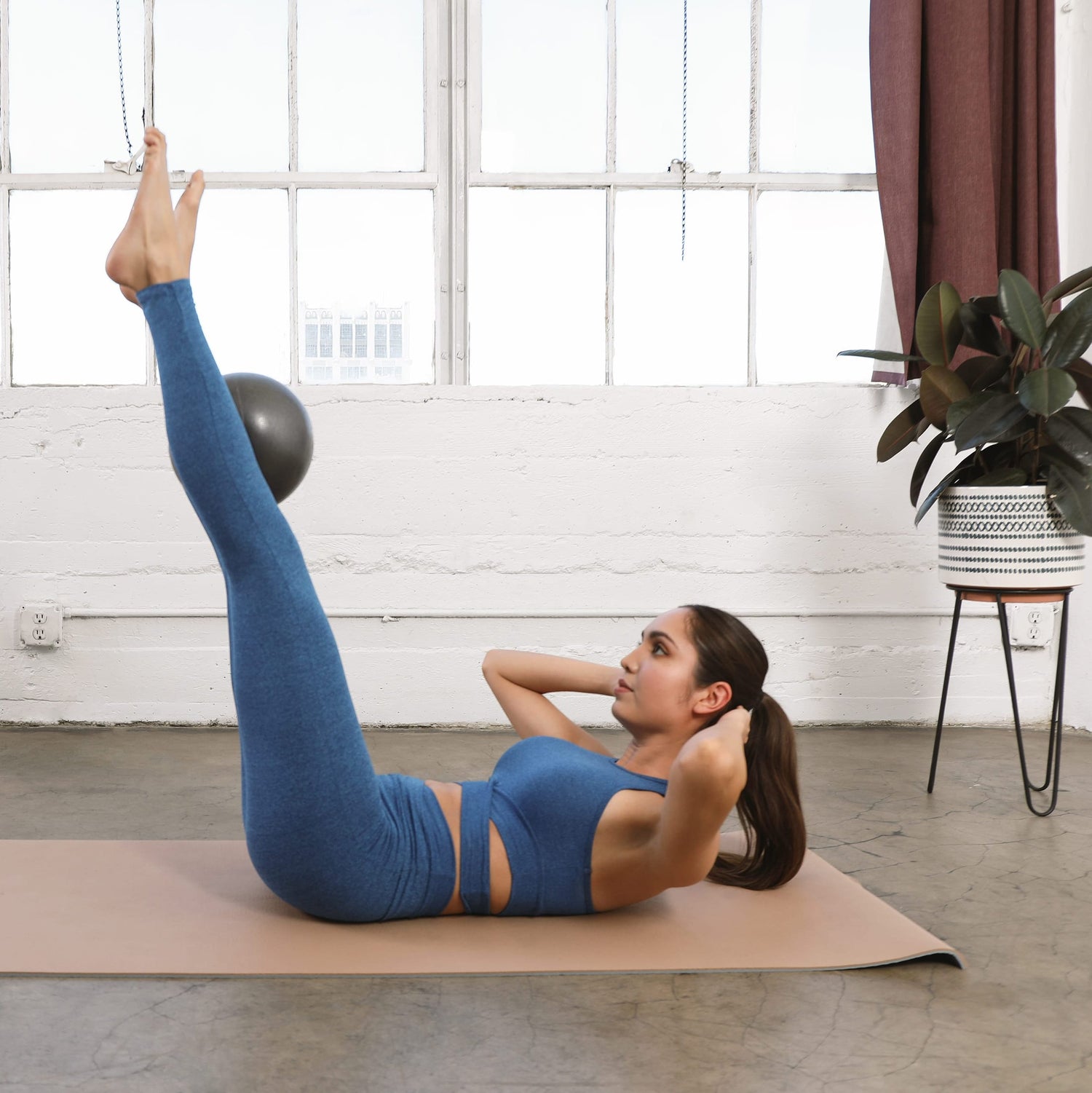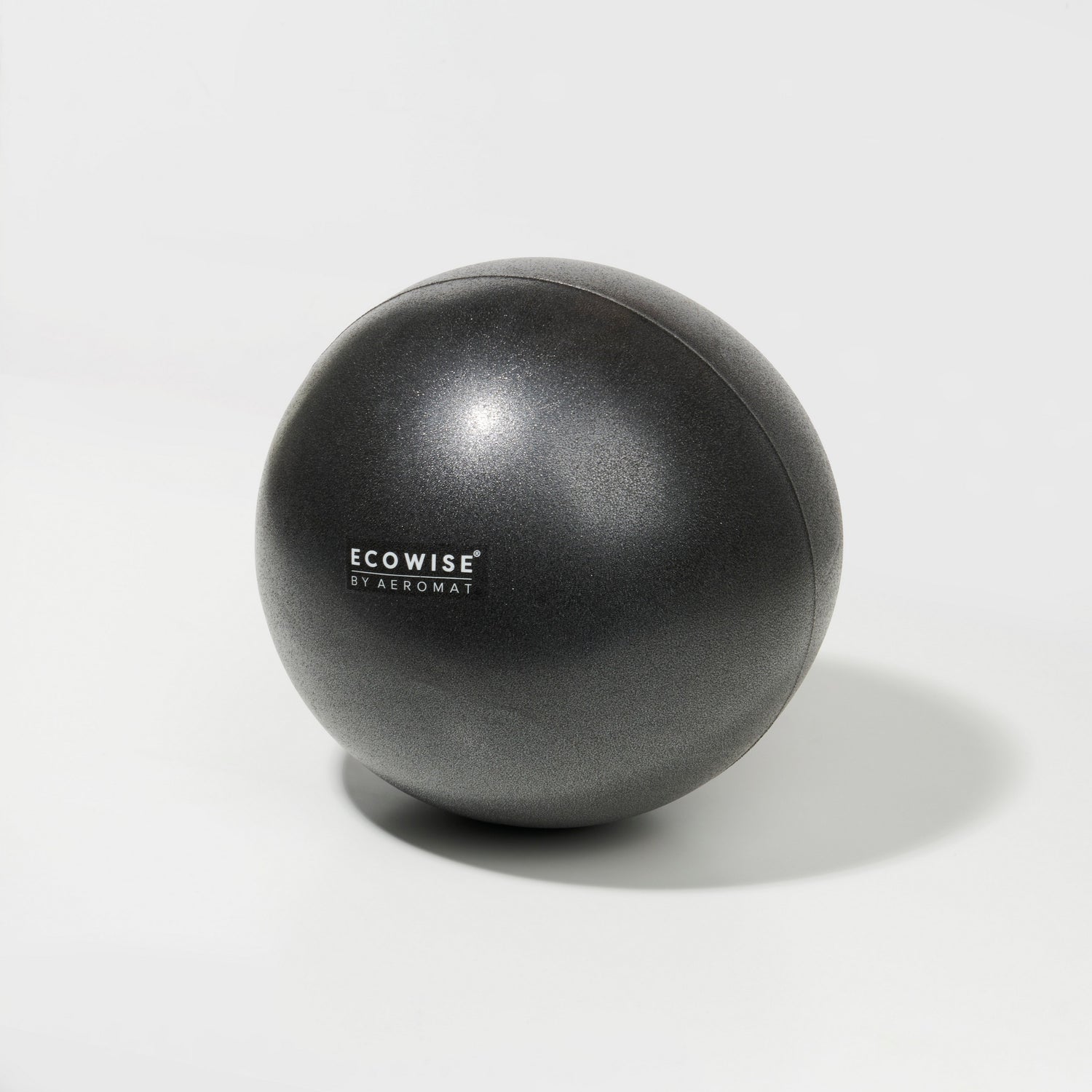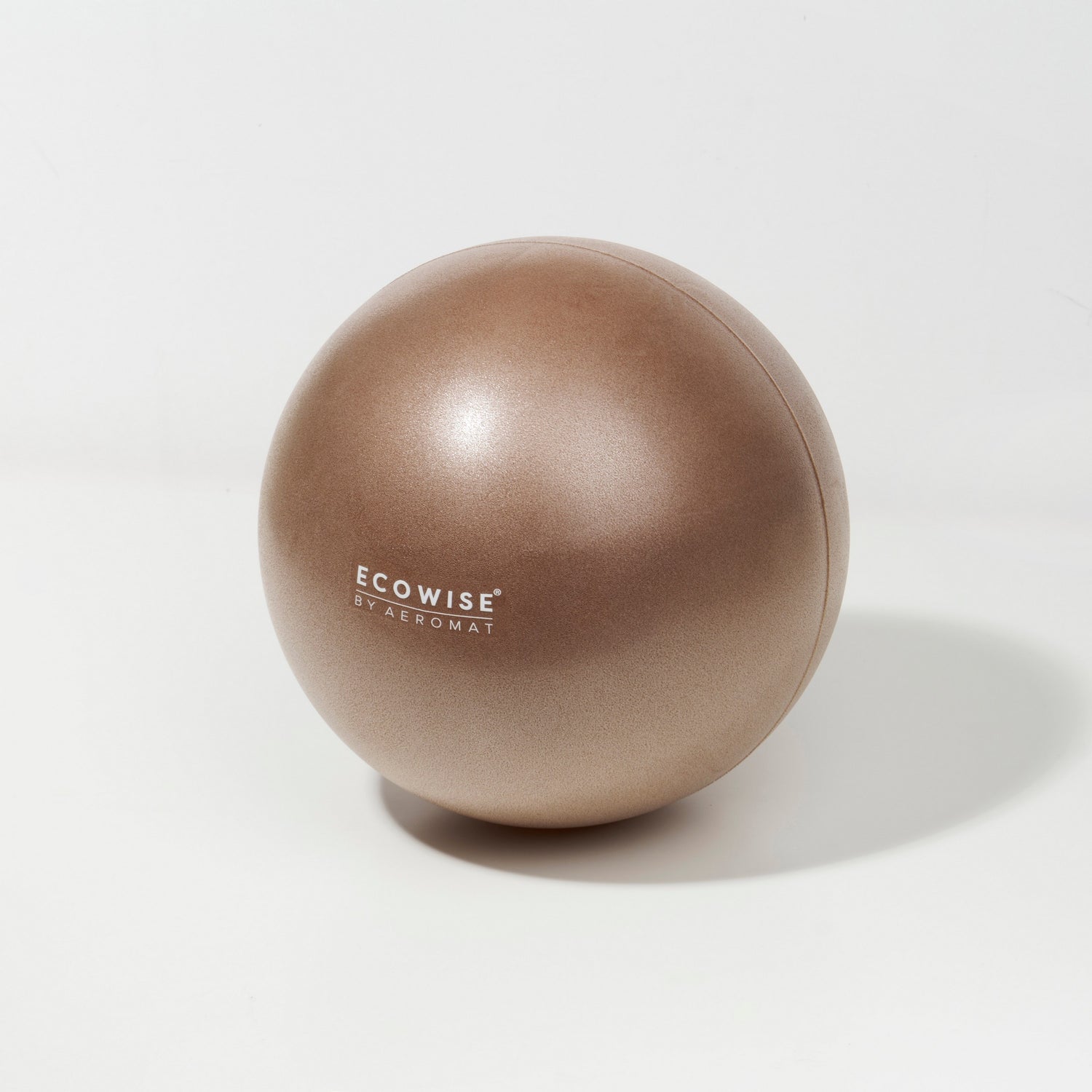Wall exercises, particularly the ball on the wall workout, are among the best full-body movements for your fitness routine. This powerful exercise combines strength training, cardiovascular conditioning, and explosive power into a single workout that works quickly. But what is a wall ball, and why is it so effective?
Athletes and fitness enthusiasts have revolutionized their training through wallball workouts. Wall balls do more than just build simple strength - they boost coordination, build endurance, and improve how you move in real life. This piece will help you become skilled at this powerful exercise, whether you're just starting with wall balls or want to perfect your technique.
You'll discover everything about proper form, progression strategies, and the foundations for wall ball success. The guide teaches safe movement patterns and shows you how to scale workouts that maximize your results through proven techniques and training principles. Whether you're doing a wall ball CrossFit workout or incorporating wall ball drills into your HIIT routine, this guide has you covered.

Master Proper Wall Ball Form
Proper form in wall exercises starts with understanding basic mechanics. This guide walks you through every significant element to help you get the most from your wall ball workout.
Essential Setup and Starting Position
The ideal position for a medicine ball wall throw is about an arm's length from the wall. This distance provides optimal power transfer and control. Your feet should be shoulder-width apart with toes slightly pointed outward. Hold the wall ball with hands positioned on the sides and slightly underneath. This grip ensures stability and prevents the ball from slipping during throws.
Breaking Down the Movement Phases
The wall ball exercise consists of these core components:
- Starting Position: Hold the ball at chest height, elbows tucked
- Descent: Lower into a deep squat, keeping chest upright
- Power Generation: Drive through heels, extending hips and knees
- Ball Release: Throw at peak extension, targeting your mark
- Catch and Reset: Receive the ball at chest level, immediately starting next rep
Common Form Mistakes to Avoid
These mistakes can limit your wall ball workout's benefits:
- Improper Distance: Standing too close or far from the wall disrupts flow
- Shoulder Fatigue: Keeping arms extended while waiting for the ball
- Poor Breathing: Not maintaining a consistent breath pattern
- Incomplete Extension: Failing to fully extend hips and knees
- Hunched Position: Losing upright posture as fatigue sets in
Quality matters more than quantity. The right form throughout your wall ball variations ensures safety and maximizes the effectiveness of each rep.
Progress Your Wall Ball Training
This guide shows you the best way to progress your wall ball training and achieve maximum results. A strong foundation is essential before you move to more challenging variations.
Beginner to Advanced Progression Path
Start with a lighter weighted ball and lower target height to become skilled at the movement pattern. Here's a proven path that works:
- Foundation Phase: Focus on form with 6-8 pound ball
- Development Phase: Increase weight to 10-14 pounds
- Advanced Phase: Progress to 20+ pounds with higher targets
- Elite Phase: Add complex variations and increased volume
Weight and Height Progression Guidelines
Proper scaling is a vital part of long-term success in wall ball exercises. Your initial target height should allow proper form - typically 4-5 feet at the beginner level. Your technique improvements will guide gradual increases in weight and height. The best approach is to increase one variable at a time, never both together.
Volume and Intensity Recommendations
Wall ball workout intensity should begin with 3 sets of 10-15 repetitions. Rest efficiently with 1-2 breaths between reps instead of long breaks. Your endurance will develop through 30-second intervals with controlled breathing patterns.
Practice wall balls in a fatigued state from time to time. This builds mental toughness and enhances form under pressure. Athletes show remarkable progress when they combine proper breathing techniques with smart volume progression.
Build a Strong Foundation
Building a strong foundation for wall ball exercises goes beyond proper form and progression. Developing specific physical attributes is significant to prevent injuries and achieve success over time.
Core Stability Requirements
The life-blood of effective wall ball workouts is core stability. A strong, stable core helps you maintain proper positioning and protects your spine throughout the movement. Our experience shows these core stability requirements:
- Knowing how to maintain proper bracing during squatting
- Control through explosive movements
- Stability during overhead throwing phases
- Balance during catch and reset phases
Lower Body Strength Prerequisites
Lower body strength drives power generation at the time you perform wall ball exercises. This movement pattern mirrors a front squat combined with an explosive push press. Your legs and hips create the foundation to develop power, which makes lower body strength vital to optimal performance. This makes wall balls an excellent compound movement for leg exercises.
Upper Body Power Development
Upper body power enhances wall ball efficiency significantly. Your legs generate the primary force, yet your shoulders, chest, and arms must work together to control and direct the ball. Proper power transfer flows from lower to upper body through the kinetic chain - a synchronized movement pattern that starts with leg drive and concludes with an explosive throw. This makes wall balls great for shoulder exercises, chest exercises, and arm exercises all in one.
Note that these foundational elements function as an integrated system. We develop each component and stay mindful of how they interconnect across wall ball variations.
Enhance Movement Efficiency

Your wall ball workout performance can improve substantially with optimized movement efficiency. The right techniques make the difference between struggling through repetitions and flowing through sets with ease.
Breathing Techniques for Better Performance
Synchronized breathing plays a crucial role during wall ball exercises. The optimal breathing pattern follows this rhythm:
- Inhale during the descent into the squat
- Maintain tight core while holding breath at bottom
- Forcefully exhale during the explosive throw
- Quick inhale as the ball descends
- Reset breathing pattern as you catch and begin next rep
Energy System Development
Wall ball exercises involve both the alactic and aerobic energy systems. Your heart rate should stay between 120-150 BPM during training sets. This range helps develop power and build endurance without overtaxing the glycolytic system. The high cardiovascular demand of wall balls makes them an excellent addition to any HIIT workout.
Recovery Between Sets
Strategic rest periods are essential between wall ball sets. For maximum efficiency, let your arms drop between throws - this brief rest helps reduce shoulder fatigue over time. Taking 1-2 full breaths between reps maintains a steady rhythm and prevents excessive fatigue.
Your high-volume workouts benefit from matching the ball's descent speed during the catch phase. This technique keeps the ball "weightless" until the drive phase and reduces overall fatigue while improving movement efficiency. You should maintain proper positioning and avoid drifting onto your toes during this synchronized descent.
Wall Ball Variations and Drills
To keep your workouts fresh and challenging, consider incorporating these wall ball variations:
- Wall Ball Slam: Instead of catching the ball, let it bounce once before picking it up and repeating the throw.
- Side Slam: Stand sideways to the wall and throw the ball with a rotational movement, engaging your obliques.
- Split-Stance Lateral Toss: Adopt a split stance and throw the ball laterally, incorporating more rotational movements.
- Lateral Shuffle: After each throw, perform a lateral shuffle before catching the ball, adding a dynamic element to your workout.
These variations not only add variety but also target different muscle groups and movement patterns, enhancing your overall athleticism.
Wall Ball Exercise at Home
Don't have access to a wall ball gym? No problem! You can still enjoy the benefits of wall work outs at home. Here are some tips for wall ball exercise at home:
- Use a sturdy wall or garage door as your target.
- If you don't have a medicine ball, a basketball or soccer ball can work for beginners.
- Mark your target height on the wall with tape.
- Start with a lower target height and lighter ball to perfect your form.
- Incorporate wall balls into your home HIIT routine for a full-body workout.
Remember, safety comes first when doing wall ball exercises at home. Ensure you have enough space and a stable surface to work on.
Find the Perfect Wall Ball from Aeromat/EcoWise
Wall ball exercises are the most versatile and effective movements you can add to your fitness routine. Athletes can enhance their overall performance and fitness levels through proper form, smart progression, and solid foundational work with this single exercise.
Becoming skilled at wall balls involves more than throwing a ball against a wall. You need to focus on breathing patterns and streamline processes while following a systematic approach. These elements work together to make wall balls a powerful tool that develops strength, power, and endurance at the same time.
Your success with wall balls depends on patient progression and consistent practice. Start with proper form by using lighter weights and lower targets. Athletes who follow these principles see better results and stay injury-free while maintaining their progress over time. Wall balls into your regular gym routine, these principles will help you get the most out of this fantastic exercise.

FAQs
What are the main benefits of incorporating wall ball exercises into my fitness routine?
Wall ball exercises offer a comprehensive full-body workout that combines strength training, cardiovascular conditioning, and explosive power development. They help build endurance, improve coordination and balance, strengthen major muscle groups (including shoulders, chest, quads, glutes, hamstrings, and arms), and enhance overall athletic performance. Additionally, wall balls improve squat form and develop functional movement patterns.
How can I ensure proper form when performing wall ball exercises?
To maintain proper form, stand about an arm's length from the wall with feet shoulder-width apart. Hold the ball at chest height with hands on the sides and slightly underneath. Lower into a deep squat, keeping your chest upright. Drive through your heels, extending hips and knees as you throw the ball at the peak of extension. Catch the ball at chest level and immediately start the next rep. Remember to maintain an upright posture and fully extend your hips and knees with each throw.
What are some common mistakes to avoid when doing wall balls?
Common mistakes include standing too close or far from the wall, keeping arms extended while waiting for the ball, poor breathing patterns, incomplete hip and knee extension, and losing upright posture as fatigue sets in. It's important to focus on quality over quantity and maintain proper form throughout the exercise.
How should I progress my wall ball training from beginner to advanced levels?
Start with a lighter ball (6-8 pounds) and a lower target height (typically 4-5 feet for beginners) to master the movement pattern. Gradually increase the weight to 10-14 pounds, then progress to 20+ pounds with higher targets as your technique improves. For optimal progression, increase either weight or height one at a time, never both simultaneously. Begin with 3 sets of 10-15 repetitions and work up to longer intervals as your endurance improves.
What are the core stability requirements for effective wall ball workouts?
A strong, stable core is crucial for wall ball exercises. You should be able to maintain proper bracing during squatting, control through explosive movements, maintain stability during overhead throwing phases, and balance during catch and reset phases. Developing these core stability elements will help protect your spine and improve overall performance.
How can I improve my breathing technique during wall ball exercises?
The optimal breathing pattern for wall balls is to inhale during the descent into the squat, maintain a tight core while holding your breath at the bottom, forcefully exhale during the explosive throw, quickly inhale as the ball descends, and reset your breathing pattern as you catch and begin the next rep. This synchronized breathing helps maintain rhythm and improves overall efficiency.
How can I enhance my movement efficiency in wall ball exercises?
To optimize efficiency, maintain a heart rate between 120-150 BPM during training sets. Allow your arms to drop briefly between throws to reduce shoulder fatigue. Take 1-2 full breaths between reps to maintain a steady rhythm. During high-volume workouts, match the speed of the ball's descent during the catch phase to keep the ball "weightless" until the drive phase, reducing overall fatigue.
Why are wall balls considered an effective exercise for overall fitness?
Wall balls are highly effective because they engage multiple energy systems and muscle groups simultaneously. They develop strength, power, and endurance in a single, efficient movement. The exercise also improves functional movement patterns, coordination, and cardiovascular fitness, making it an excellent choice for athletes and fitness enthusiasts looking to maximize their training results.












